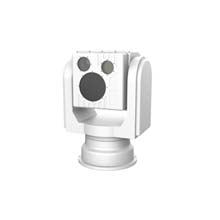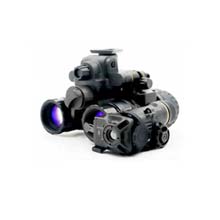Enhancing Night Driving Safety and Autopilot Systems with Automotive Thermal Cameras

In the realm of automotive technology, safety has always been a top priority. With advancements in sensor technologies, we're witnessing a significant transformation in the way vehicles operate, particularly during low-light conditions. One such innovation that's making waves in the industry is the integration of automotive thermal cameras. These remarkable devices are not only improving night driving safety but also playing a crucial role in the development of autopilot systems. In this blog, we'll dive into how automotive thermal cameras work and their contributions to enhancing both safety and autonomy on the roads.
Automotive thermal cameras operate based on the principle of detecting heat signatures emitted by objects. Unlike traditional visible light cameras that rely on ambient lighting, thermal cameras can capture thermal radiation emitted by objects, making them ideal for low-light and no-light conditions.

These cameras work by utilizing infrared sensors that detect temperature differences in their field of view. Warmer objects emit more infrared radiation, and cooler objects emit less. By converting these temperature differences into grayscale images, thermal cameras create a distinct visual representation of the environment, highlighting the heat signatures of various objects.
One of the primary benefits of automotive thermal cameras is their ability to enhance visibility in challenging nighttime conditions. Traditional headlights might struggle to illuminate obstacles like pedestrians, animals, or debris on the road. Thermal cameras can detect these heat-emitting entities, providing drivers with a clearer view of potential hazards ahead.
Unlike traditional headlights that can reflect off wet surfaces or fog, thermal cameras are not affected by such glare or reflections. This ensures that drivers have a consistent and unobstructed view of the road regardless of external conditions.

Thermal cameras can unveil hidden hazards that might not be visible to the naked eye or even to conventional cameras. This includes identifying animals in dense foliage or pedestrians obscured by darkness.
Automotive thermal cameras are a vital component of advanced driver assistance systems (ADAS) and autopilot technologies. They provide a complementary layer of information for object recognition, allowing autonomous vehicles to "see" and respond to their surroundings effectively.
Incorporating thermal cameras as part of autopilot sensor suites adds redundancy to the system. In scenarios where visible light cameras or other sensors might struggle due to adverse weather conditions, thermal cameras can continue to provide crucial data, ensuring the safety of both passengers and pedestrians.
Autonomous vehicles rely heavily on sensor data to navigate and make decisions. With the ability to operate effectively in low-light conditions, automotive thermal cameras extend the operational capabilities of autonomous vehicles, enabling them to navigate and make informed choices even at night.
Automotive thermal cameras are revolutionizing the way we perceive night driving safety and the potential of autonomous vehicles. By detecting heat signatures emitted by objects, these cameras provide improved visibility, reduce glare, and uncover hidden hazards. Furthermore, their integration into autopilot systems enhances object recognition, adds redundancy, and extends the operational capabilities of autonomous vehicles into the nighttime hours. As automotive technology continues to evolve, the integration of thermal cameras marks a significant step forward in achieving safer and more autonomous driving experiences.

















